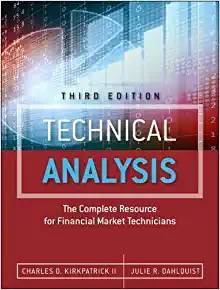Question
The first project is to increase Automaton's manufacturing capacity for five years.Automaton's Chief Financial Officer, Patrick McCabe believes doing this would boost Automaton's market share
The first project is to increase Automaton's manufacturing capacity for five years.Automaton's Chief Financial Officer, Patrick McCabe believes doing this would boost Automaton's market share in the long run.
To facilitate this temporary expansion, Automation will purchase new equipment for $1,500,000.The additional micro-processors will be manufactured in a building Automaton purchased eight years ago for $4,200,000.The building will be retooled for the new project at a cost of $500,000, which includes building permit fees of $25,000.
The purchased equipment will be depreciated using Modified Accelerated Cost Recovery System (MACRS) depreciation schedule (see exhibits), and sold for $250,000 in year 5.
The projected revenue for year 1 is $550,000.Subsequent year's revenues will increase by eight percent of the preceding year's revenues (i.e., year 2 revenues equals 1.08 * $550,000).This expansion project will result in an annual loss of revenues from an existing manufacturing operation of $100,000.Operating expenses (excluding depreciation and amortization) is estimated at 20 percent of net revenues.
Operating net working capital will rise by $250,000 and $300,000 in years 1 and 2, respectively.This investment in operating net working capital fully reverses in the final year of the project.Annual interest expense is fixed at $35,000.
To reduce production costs, Automaton's COO, Christine Brady, suggests replacing one of its manufacturing equipment with a newer, more efficient model.This four-year project will result in reduced manufacturing costs which, in turn, would allow Automation to reduce the price of its flagship AI CalcPro IV.Christine believes reducing the cost of the processor will better position Automation to compete with AI-CHIP.
The current equipment, a MAC-98, can be sold today for $1,000,000 net.A brand-new MAC-100 retails for almost $3,250,000; however, Christine believes she can purchase it for $3,000,000 today.She will fund this purchase in part with proceeds from the sale of the MAC-98.In addition, accounts payable are expected to increase by $1,500,000 today, and fully reverse in year 4.
The new equipment will be in operation beginning in year two.As the old equipment will be offline in year 1, Christine forecasts lost revenues of $550,000 in year 1 arising from the idled equipment.The cost savings in years 2, 3 and 4 are estimated at $600,000, $950,000, and $1,000,000, respectively.Automaton's cost of capital and tax-rate remain unchanged. The equipment is depreciated using straight line depreciation (i.e., Equipment Cost - Salvage Value) / Useful Life).
Kofi is particularly excited about this project and goes about evaluating it.He is a bit unclear about how changes in depreciation impact FCFs, and seeks guidance from Christine.Christine makes the following two statements: "All else equal, higher depreciation expenses will result in larger FCF and lower net income.The specific impact of changes in depreciation expenses on FCFs can be discerned by multiplying the incremental depreciation expense by the tax rate."
Questions
- What is the initial cash outlay for this project (i.e., year 0 cash flows)?
- What is this project's FCF for years 1 through 4?
- What is this project's NPV and IRR?
- Kofi (again) is concerned that the estimated cost of capital for Automaton is too high.He adjusts Automaton's Beta and computes a new cost of capital of 5%.Using this, what is this project's NPV?
- Is Christine's comment on the relationship between depreciation and FCFs and net income accurate?Discuss briefly.
- Is Christine's second comment accurate?Discuss briefly.
Exhibits
MACRS 3 Schedule
Year 1: 33.33%
Year 2: 44.45%
Year 3: 14.81%
Year 4: 7.41%
Cost of Capital
WACC =
Cost of Equity = Risk-Free Rate + *(Equity Risk Premium)
After-Tax Cost of Debt = (1-Tax Rate) * Pre-Tax Cost of Debt
Risk-Free Rate (10-Year U.S. Treasury) = 3%
The Equity Risk Premium = 4.5%
Tax Rate: 40%
Automaton's beta () = 1.2
Automaton's Market Value of Equity / Total Capital ratio = 100%
Automaton's Market Value of Debt / Total Capital = 0%
Step by Step Solution
There are 3 Steps involved in it
Step: 1

Get Instant Access to Expert-Tailored Solutions
See step-by-step solutions with expert insights and AI powered tools for academic success
Step: 2

Step: 3

Ace Your Homework with AI
Get the answers you need in no time with our AI-driven, step-by-step assistance
Get Started


